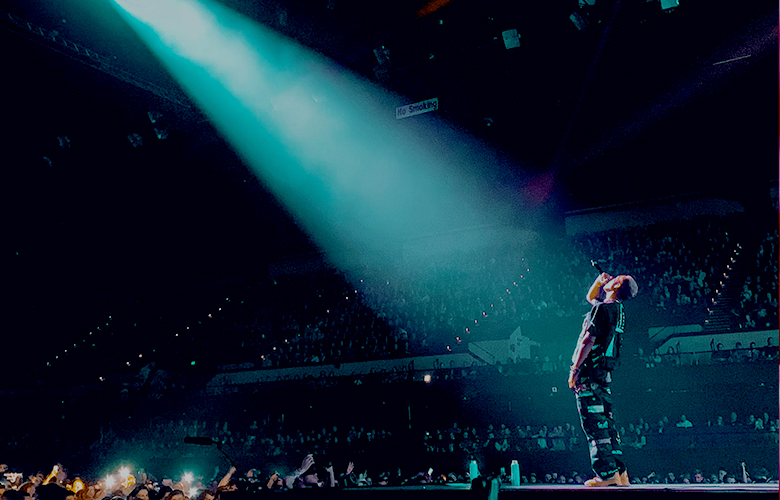
During my time as a Department Head of Lighting, I had the privilege of managing a group of amazing technicians who ran the eight followspots used in our show. I’ve had to interview and audition many people to fill those positions. Some didn’t make the cut during the interview, others in the audition, and still others I needed to terminate because they simply could not run the followspot at the level required for the show.
But I guarantee those shows could be better. It could take a good show and turn it into a great show, and the audience probably wouldn’t know why.
Followspot operation is a performance with an immediate impact on show quality. Have you ever been to a show where the followspot on a principle performer cut off their head? How about when a performer who has been stationary for an extended period of time moved and the followspot didn’t follow, allowing the performer to walk out of their light. These are mistakes of lazy, disengaged, or poor followspot operators. A good followspot operator will be attentive, continually managing the iris and dowser so that the size and intensity of the beam will remain the same relative to the performer no matter how much they move around on stage. If you’re running a followspot with one hand, you’re doing it wrong, and it will be perceived on stage.
Think of running a followspot as a dance with the performer you’re lighting. For the most part, you are following the lead of the performer. After a while, you start to learn the dance and anticipate the movements and act accordingly. If this is a well-choreographed number, then sometimes the followspot operator may lead so that the performer can get some needed light on stage to help navigate scenery. This is especially true in the circus for which I have worked the last 30 years where followspots will lead performers reaching for trapeze bars, bouncing on trampolines, or landing on top of a column of people ready to catch them.
These systems have the advantage of being able to create large “followspot” shows with low labor overhead because you simply assign movers that are already in the rig to followspot a performer. These systems also have an advantage of consistency for touring shows since they are programmed into the lighting show and are the same from venue to venue when you may not get consistency in followspot operators.
I recently went to a concert that used an automated followspot system and admit that I was impressed when, all of a sudden, a dozen movers panned onto the main singer and followed the performer around. It unfortunately became a distraction when the singer moved to center stage and swayed back and forth while singing. A seasoned followspot operator would have opened up their iris a little and kept the light stationary to not be a distraction. Here, at this concert, 12 movers swayed back and forth, not very gracefully, to try to keep the singer’s tracking transmitter centered in the light. It was terribly distracting and not artistic at all. For me, it made what could have been a great show just a good show. I don’t think anybody who aspires to be in our business would be satisfied with just good; we always want to be great!
Some of these issues might be corrected in the next version of firmware for the tracking system, but this continued removal of the human element in our live performances will erode the reason we love going to live shows in the first place. We’re excited by the idea that what we’re about to see is going to be unique. We like knowing that what we are experiencing is not a reproduction of some previous performance edited together to be exactly the same at every viewing. We want something specific to us and the other patrons in the audience, something special, with energy and soul!
If you haven’t figured it out, I was a followspot operator for several years early in my career. It is part of why I have such an appreciation for those who treat it as more than “just a followspot.” It is not something everyone can do well. For those that can and take pride to do it well, whether you are working for me, or working a show I’m watching, I truly appreciate and applaud you!
Stage Lighting: The Science of Colour & Light


Michael Cassera enjoys a twenty-seven-year long career with Cirque du Soleil spanning three of their long-running resident shows: Mystère, Zumanity, and LOVE. With Cirque, Michael has worked as a Followspot Operator, a Board Op., an Assistant Head, and Head of Lighting. He is currently the Technical Manager for Mystère. Before joining Cirque, he worked for a brief time as a followspot operator for Siegfried and Roy at The Mirage. Prior to moving to Las Vegas, Michael worked on the bounce off-off-Broadway and in the NYC tri-state area as a stage electrician and lighting designer. He was also employed as a local stagehand at Giants Stadium and Brendan Byrne Arena. A graduate of The School of Visual and Performing Arts at Syracuse University, Michael earned his Bachelor of Fine Arts in Drama with an emphasis in Design in 1991. He continues to live in Las Vegas with his wife, Heather and their two dogs, Maggie and Roxie Li.
Read Full Profile© 2021 TheatreArtLife. All rights reserved.

Thank you so much for reading, but you have now reached your free article limit for this month.
Our contributors are currently writing more articles for you to enjoy.
To keep reading, all you have to do is become a subscriber and then you can read unlimited articles anytime.
Your investment will help us continue to ignite connections across the globe in live entertainment and build this community for industry professionals.